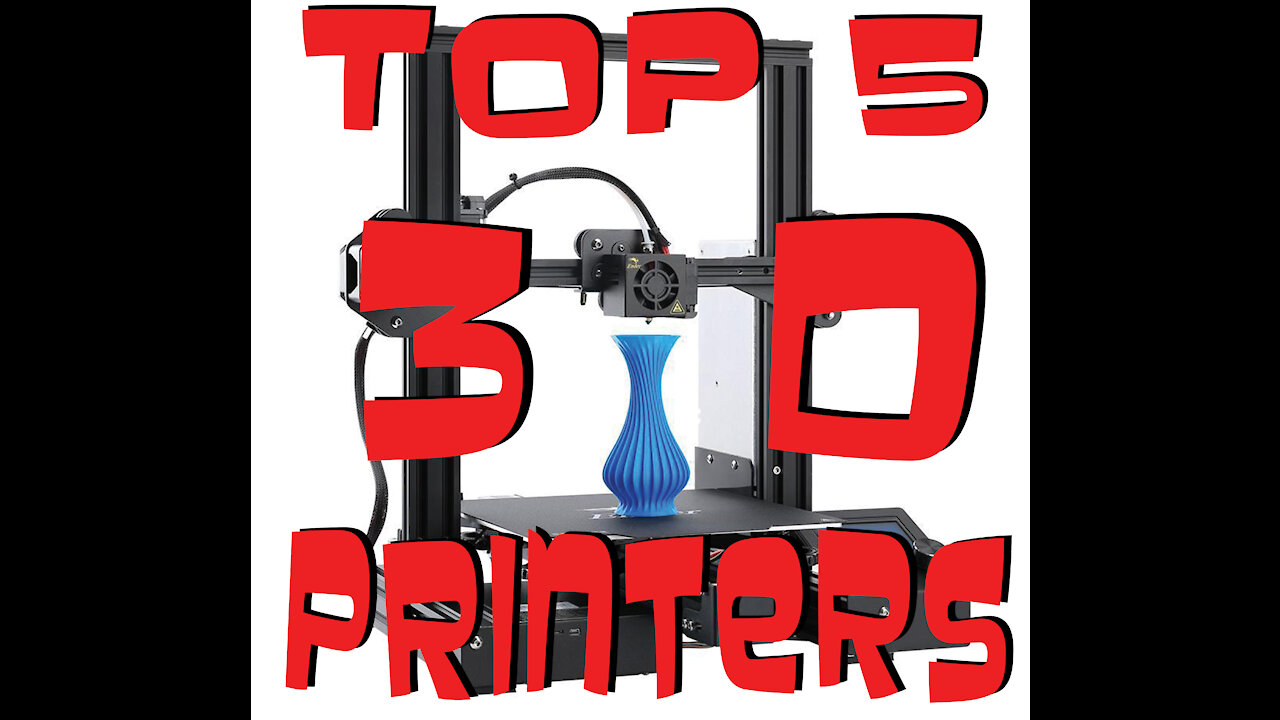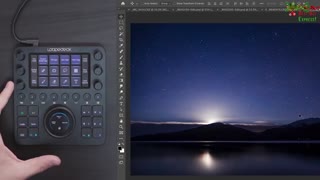Premium Only Content

Top 5 Best 3D Printers Review in 2021
Here is the list of the five best 3D printers:
1. Monoprice 15365 Select Mini 3D Printer
2. FlashForge 3D Printer Creator Pro
3. QIDI Technology Extruder 3D Printer
4. Dremel Digilab 3D20 3D Printer
5. MakerBot Replicator 3D Printer
3D printing or additive manufacturing is a process of making three dimensional solid objects from a digital file
The creation of a 3D printed object is achieved using additive processes. In an additive process, an object is created by laying down successive layers of material until the object is created. Each of these layers can be seen as a thinly sliced cross-section of the object.
3D printing is the opposite of subtractive manufacturing which is cutting out / hollowing out a piece of metal or plastic with for instance a milling machine.
3D printing enables you to produce complex shapes using less material than traditional manufacturing methods.
3D Software
There are many different software tools available. From industrial grade to open source. We’ve created an overview on our 3D software page.
We often recommend beginners to start with Tinkercad. Tinkercad is free and works in your browser, you don’t have to install it on your computer. Tinkercad offers beginner lessons and has a built-in feature to export your model as a printable file e.g.STL or.OBJ.
Now that you have a printable file, the next step is to prepare it for your 3D printer. This is called slicing.
Slicing: From printable file to 3D Printer
Slicing basically means slicing up a 3D model into hundreds or thousands of layers and is done with slicing software.
When your file is sliced, it’s ready for your 3D printer. Feeding the file to your printer can be done via USB, SD, or Wi-Fi. Your sliced file is now ready to be 3D printed layer by layer.
3D Printing Industry
The adoption of 3D printing has reached critical mass as those who have yet to integrate additive manufacturing somewhere in their supply chain are now part of an ever-shrinking minority. Where 3D printing was only suitable for prototyping and one-off manufacturing in the early stages, it is now rapidly transforming into a production technology.
Most of the current demand for 3D printing is industrial in nature. Acumen Research and Consulting forecast the global 3D printing market to reach $41 billion by 2026.
As it evolves, 3D printing technology is destined to transform almost every major industry and change the way we live, work, and play in the future.
Examples of 3D Printing
3D printing encompasses many forms of technologies and materials as 3D printing is being used in almost all industries you could think of. It’s important to see it as a cluster of diverse industries with a myriad of different applications.
A few examples:
– consumer products (eyewear, footwear, design, furniture)
– industrial products (manufacturing tools, prototypes, functional end-use parts)
– dental products
– prosthetics
– architectural scale models & maquettes
– reconstructing fossils
– replicating ancient artifacts
– reconstructing evidence in forensic pathology
– movie props
-
 17:30
17:30
Looseie
4 years agoTERA 2021 Review - PC
54 -
 14:10
14:10
Looseie
4 years agoGuild Wars 2 2021 Review
45 -
 11:39
11:39
products22
4 years agoTop 10! Review The Best Products From AliExpress. Amazon 2021. New Future Tech.
81 -
 6:00
6:00
BookstoRead
4 years agoBest Ever Travel Tips - Review
46 -
 16:55
16:55
Looseie
4 years agoElder Scrolls Online 2021 Review
43 -
 1:20:31
1:20:31
Awaken With JP
4 hours agoWiping Hard Drives, Hire a Criminal Defense Lawyer - LIES Ep 79
54.4K32 -
 1:02:23
1:02:23
In The Litter Box w/ Jewels & Catturd
20 hours agoDEI Kills | In the Litter Box w/ Jewels & Catturd – Ep. 744 – 2/18/2025
65.3K30 -
 LIVE
LIVE
Game On!
2 hours agoBreaking Down COLLEGE BASKETBALL BETTING LINES Like a Pro!
98 watching -
 LIVE
LIVE
John Crump Live
5 hours agoMexico Backs Cartels By Threatening To Designate Gun Manufactures As Terrorist!
255 watching -
![[Ep 611] DOGE On The March! | Guest Sam Anthony - [your]NEWS | Seditious Dems | Ukraine](https://1a-1791.com/video/fwe1/97/s8/1/q/C/C/3/qCC3x.0kob-small-Ep-611-DOGE-On-The-March-Gu.jpg) LIVE
LIVE
The Nunn Report - w/ Dan Nunn
2 hours ago[Ep 611] DOGE On The March! | Guest Sam Anthony - [your]NEWS | Seditious Dems | Ukraine
422 watching